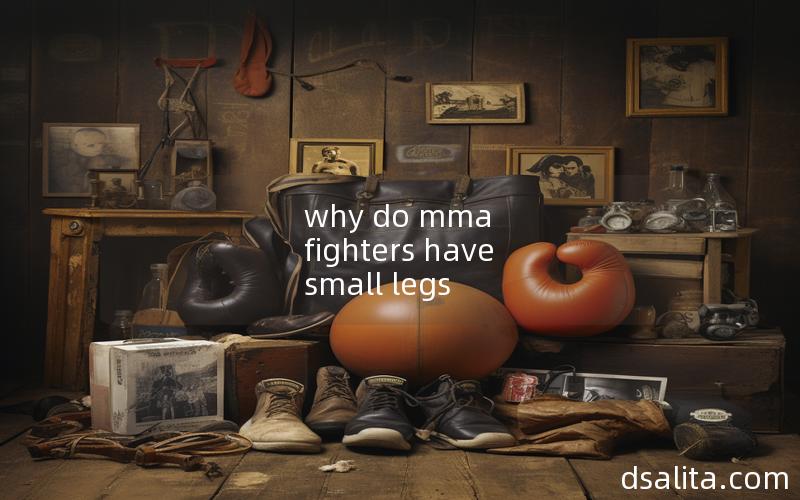Why Do MMA Fighters Have Small Legs?
When it comes to mixed martial arts (MMA) fighters, one noticeable feature is their relatively small legs compared to other athletes. This phenomenon can be attributed to several factors, including training methods, weight management, genetics, injury prevention, specific fighting techniques, and more. Let’s explore these aspects in detail:

1. Training Methods
MMA fighters prioritize overall body strength and conditioning, focusing on exercises that enhance their core, upper body, and explosive power. While they do train their legs, the emphasis is often on functional movements rather than building muscle mass. This approach helps them maintain agility, speed, and flexibility, which are crucial in MMA fights.
2. Weight Management
MMA fighters compete in different weight classes and must often cut weight to meet specific requirements. To achieve this, they engage in intense cardio workouts and follow strict diets. As a result, their legs may appear smaller due to the loss of water weight and reduced muscle mass.
3. Genetics
Genetics play a significant role in determining an individual’s muscle composition and distribution. Some individuals naturally have smaller leg muscles, making it easier for them to excel in sports that require agility and quick movements, such as MMA.
4. Injury Prevention
By keeping their leg muscles lean and flexible, MMA fighters reduce the risk of injuries during fights. Bulky leg muscles can be more prone to strains and tears, while smaller, well-conditioned muscles provide better stability and resilience.
5. Fighting Techniques
MMA fighters often rely on grappling, takedowns, and ground-based techniques. These moves require a lower center of gravity and strong core stability. Having smaller legs allows them to maintain balance and execute these techniques effectively.
6. Weight Distribution
Having smaller legs can help MMA fighters distribute their weight more evenly, making it easier to control their opponents during clinches and grappling exchanges. This advantage allows them to exert greater force and control over their opponents.
7. Speed and Agility
Small legs contribute to increased speed and agility, enabling MMA fighters to evade strikes, close the distance, and execute quick strikes of their own. These attributes are essential for success in the fast-paced and dynamic environment of MMA.
8. Weightlifting Focus
MMA fighters often prioritize weightlifting exercises that target the upper body, such as bench presses and overhead presses, to enhance their punching power and overall strength. This focus on upper body development can result in relatively smaller leg muscles.
9. Weight Class Advantages
In certain weight classes, having smaller legs can provide an advantage. For example, in lighter weight divisions, fighters with smaller legs may find it easier to cut weight and maintain their agility, giving them an edge over opponents with bulkier leg muscles.
10. Endurance Training
MMA fighters engage in extensive endurance training to improve their cardiovascular fitness and stamina. This often involves activities like running, cycling, and swimming, which primarily target the lower body. While these exercises help develop leg strength, they may not result in significant muscle mass gain.
11. Weight Distribution
Having smaller legs allows MMA fighters to distribute their weight more efficiently, enabling them to move swiftly and change directions quickly. This advantage helps them excel in striking, evading, and countering their opponents.
12. Body Proportions
Each individual has unique body proportions, and some MMA fighters naturally have smaller legs in relation to their upper body. These proportions can be advantageous in MMA, as they allow for better balance, coordination, and fluidity of movement.
Conclusion
While MMA fighters may have relatively smaller legs compared to athletes in other sports, this characteristic offers numerous advantages in their chosen discipline. From improved agility and speed to better weight management and injury prevention, these fighters have honed their bodies to excel in the dynamic and demanding world of mixed martial arts.

 Dsalita Boxing
Dsalita Boxing






